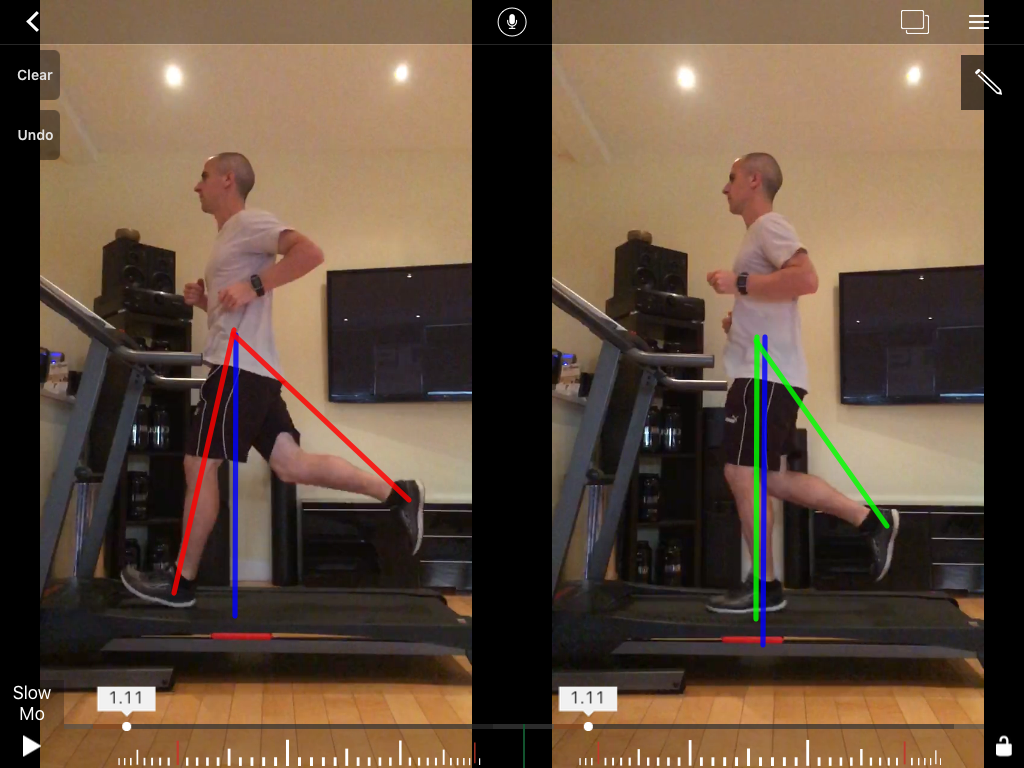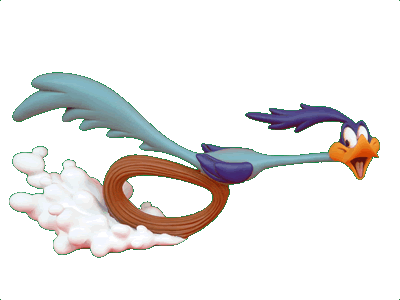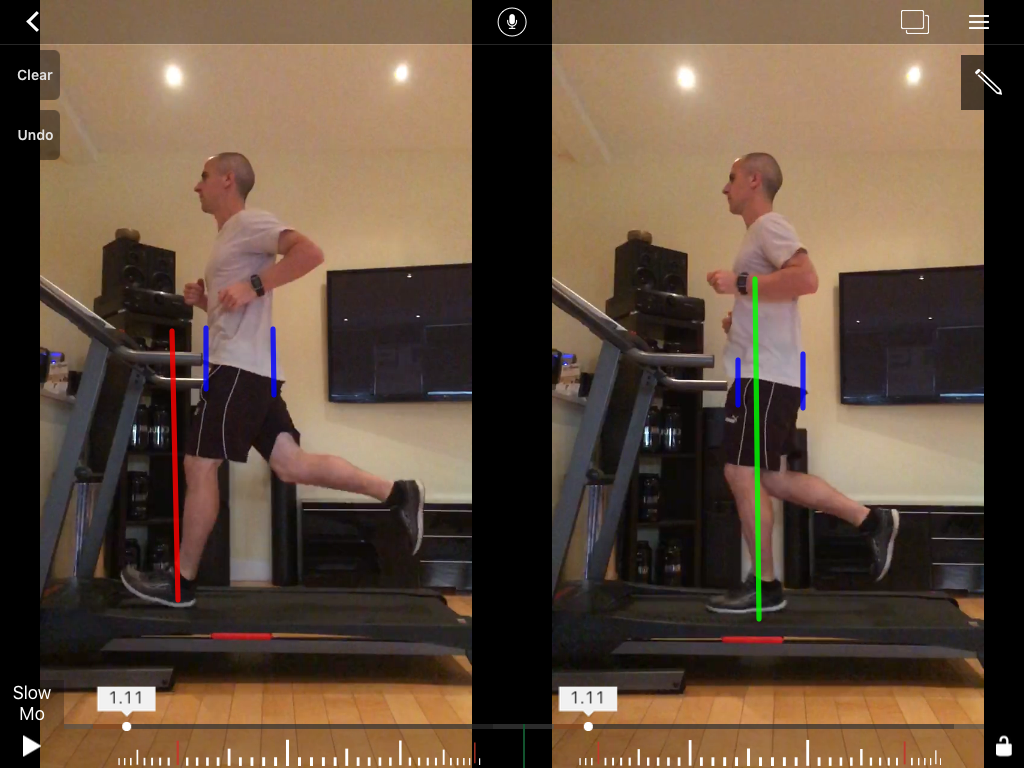
What is Over Striding?
Over striding is when the foot lands too far out in front of the centre of mass as you run. Your centre of mass is at the base of your spine/lower back. When your initial contact during foot strike is too far in front of your centre of mass it is called over striding. To determine if a runner is over striding we draw a vertical line from the lateral malleolus (bony bit on the outside of the ankle) at the point of loading response (the point at which you take the load onto your leg). If that vertical line is in front of the runner’s pelvis, they are over striding. If the vertical line is not in front of the pelvis, they are not over striding.
You can see this in the image below. In the first image I’m over striding and you can see the red vertical line does not fall within the blue lines marking my pelvis. In the second image, I’m not over striding and you can see the green vertical line falls within the blue lines marking my pelvis.
Is Over Striding Bad for Runners?
One consequence of over striding is that some of our energy is not directed to propel us forwards. We can see this in the next image where I’ve drawn an arc to join the feet at the point of loading response. In the first image (over striding), you can see that some of my energy is being spent in effectively pushing myself backwards. In the research this is called a braking impulse (Souza 2015). I call it “running with the brakes on”.

In the second image, you can see that all of my energy is directed backwards so I can propel myself forwards, like road runner.

See how road runner has got all of his propulsive energy behind him. That’s what we want.
How do I know if I am over striding?
You will need to take a video of yourself running in order to see if you are over striding. I use the Hudl App. It’s a free app that allows you to scroll through the frames and draw lines on the video to see what is going on. Take a video of yourself running from the side. Either outside or on the treadmill is fine. Then just scroll through the frames until you are looking at the point at which your foot strikes the ground and your shoe cushion starts to deform as you take the load (loading response). Then draw (or imagine) a vertical line ascending from the bony bit on the outside of your ankle (lateral malleolus). If that vertical line is in front of your pelvis, you’re over striding.
What should I do about it?
There are a couple of cues that I’ve found work really well for runners who are over striding. The first is to imagine a wall just a few inches in front of your body as you run. If you stride out too far you will bang your knee on the wall. The other cue that often works well is to think of “paw back”. The way I visualise paw back is to imagine a dog running and ‘pawing back’ the ground behind him as he runs.
Try each of the cues while you are taking a video from the side. Decide which one you find most comfortable and then review the videos to see which one had the best effect. If you repeat the same assessment as above and find that the vertical line drawn from the bony bit of your ankle at foot strike now falls within your pelvis, congratulations, you’re no longer an over strider.
That being said, always remember to implement any running technique modification very gradually. I usually advise 1 minute of every 5 on easy runs only for the first 4 weeks. After that progress to 2 minutes of every 5 and then so on in another 4 weeks. If things start to hurt, just keep the amount of “new technique” running the same for a few weeks until your tissues adapt, then start to increase again.
